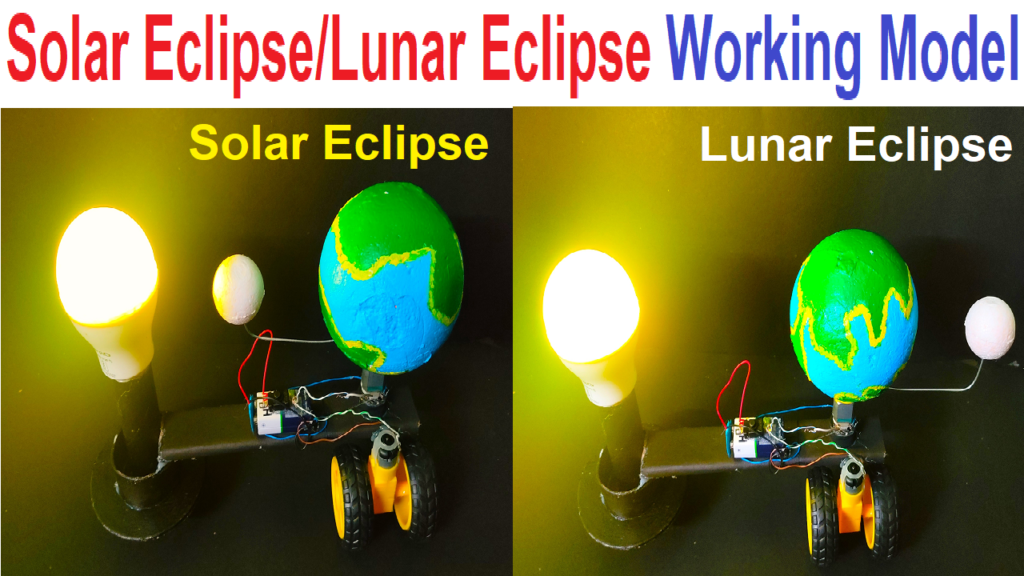Creating a working model of solar and lunar eclipses using a light bulb as the sun and a plastic ball as Earth involves a few steps. Here’s how you can do it:

Materials Needed:
- Light bulb
- Plastic ball (for Earth)
- Two small wheels
- Cardboard or a sturdy base
- Wooden dowel or metal rod
- Paints (optional, for decoration)
- Markers
- Craft glue or hot glue gun
- Small flashlight (optional, for added effect)
Step-by-Step Instructions:
- Prepare the Base:
- Attach the light bulb securely to the base using a socket. This will represent the sun.
- Create Earth:
- Paint the plastic ball to resemble Earth. Use blue and green for oceans and landmasses.
- Once the paint dries, mark a small ‘X’ on one side of the ball. This will represent a specific point on Earth’s surface.
- Mount Earth on Wheels:
- Attach the two wheels to the bottom of the plastic ball (Earth) using glue.
- Ensure that the wheels are positioned evenly so that the ball can rotate smoothly.
- Make the Tilted Axis:
- Tilt the wooden dowel or metal rod slightly. This will serve as Earth’s axis.
- Attach Earth to the tilted axis, making sure it’s stable.
- Position Earth and Sun:
- Place Earth at a certain distance from the sun (light bulb) on the base. The distance should be relative, not to scale.
- Create the Moon:
- If you want to demonstrate lunar eclipses, you can use a smaller ball (painted to look like the moon) mounted on a small stick.
- Add Lunar Orbit:
- Attach the moon to the Earth using the stick and position it so that it revolves around Earth.
- Add the Circular Rotation:
- Attach a circular piece of cardboard or plastic to the base. This represents the orbital path of Earth around the sun.
- Attach the wheels to the bottom of the circular piece, allowing it to rotate.
- Demonstrate Eclipses:
- Turn on the light bulb (sun). Depending on the position of the moon, you can show solar and lunar eclipses.
- To demonstrate a solar eclipse, position the moon between the Earth and the sun, blocking the light from reaching Earth.
- To demonstrate a lunar eclipse, position the Earth between the sun and the moon, casting a shadow on the moon.
- Adjust and Test:
- Test the model by rotating Earth around the sun and observing how eclipses occur.
- Make any necessary adjustments for smoother operation.

